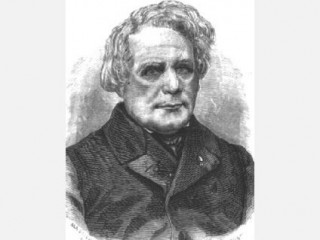
Heinrich Daniel Ruhmkorff biography
Date of birth : 1803-01-15
Date of death : 1877-12-20
Birthplace : Hannover, Germany
Nationality : German
Category : Science and Technology
Last modified : 2010-05-26
Credited as : Mechanic and electrical researcher, induction coil, Ruhmkorff’s coil
0 votes so far
The electrical researcher Heinrich D. Ruhmkorff was born on January 15, 1803, in Hannover, Germany. After apprenticeship to a German mechanic, Ruhmkorff worked in England with Joseph Brahmah, inventor of the hydraulic press. In 1855 he opened his own shop in Paris, which became widely known for the production of high-quality electrical apparatus. There he built a number of improved induction coils, including one in 1851 that was awarded a 50,000-franc prize in 1858 by Emperor Napoleon III as the most imporant discovery in the application of electricity.
He was able to improve Callan’s two-winding induction spark-coils, on the basis of the research conducted in Paris by Masson and Breguet in 1842, in such a way that since then these devices bear his name. Ruhmkorff’s coil could produce sparks more than 1 foot (30 centimetres) in length. Ruhmkorff’s coils, which produced high-voltage current within a secondary armature winding, were used for the operation of Geissler and Crookes tubes as well as for detonating devices.
The first patents date back to 1851 and follow one another introducing a few fundamental novelties. The iron core is still rectilinear and the primary winding, close to the iron, and the secondary winding, are arranged on it. The primary winding is fed by a storage battery, through a switch operated by the magnetized core. The current in the primary winding is pulsed, and the voltage on the secondary is alternating. First of all, Ruhmkorff took particular care of the secondary insulation, using for the winding a lacquered copper wire, then inserting between one layer and the other a sheet of paper or varnished silk and finally separating the primary winding from the secondary one by a glass pipe.
Afterwards, by using an invention of the English E. and C. Bright, he divided the secondary winding into compartments, each one wound and insulated from the others; all were then connected in series. In this way the spots between which the highest difference in potential was to be found were at the greatest possible distance. The secondary wire could reach even tens of kilometers of total length. Later Ruhmkorff improved the mercury switch by covering the mercury with alcohol to extinguish the spark and avoid oxidation. Finally, applying fizeau’s device, he connected a capacitor between the terminals of the primary interruption bow, in order to increase the induced voltage. The frontal pawn is used to invert the primary current.
Ruhmkorff coil was popular for energizing discharge tubes and in particular for generating X-rays (which were discovered in 1895 by Roentgen).
Ruhmkorff’s induction coils were used in many physical experiments when generation of high voltages was needed. This picture shows a very large Ruhmkorff’s induction coil. Ruhmkorff’s doubly wound induction coil later evolved into the alternating-current transformer. He also invented a thermo-electric battery in 1844.
Heinrich D. Ruhmkorff died on December 20, 1877, in Paris.
















